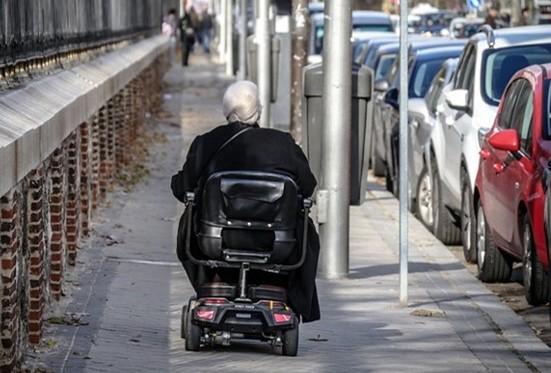Problem outline
The aging and silvering of our population presents our health care system, welfare state and cities with new and ever-increasing challenges. Although this age group has an enormous amount to offer (a wealth of experience and knowledge in terms of living, life, work, social participation, etc.), the question arises as to whether the offer that surrounds older adults is sufficiently adapted to their specific needs. How do we ensure that our roads, squares, housing, leisure offerings, care and services remain accessible to this growing group? In 2010, the World Health Organization established the Age-friendly cities and communities program to work within eight different domains around barriers to well-being and active participation for older citizens in an urban context.
Research design
With this research we want to gain a better and broader view of the experiences and needs of the elderly within Hoboken and Borgerhout, in order to work in co-creation with the elderly and local policy towards a more elderly-friendly living environment. For the next two years of research, this project envisages a staged approach, as we always start in a new district with a general survey and zoom in on a specific challenge the following year, based on the results from the first year.
Approach district Hoboken
The already collected mixed data pool (pilot project) and community planning methodologies will serve as a basis for the development of a guideline for 'Reconnaissance trips' or 'bottleneck walks' that will be organized in the various districts in Hoboken. In this way, the location of bottlenecks within the themes of public space and basic mobility will be clearly mapped out together with the elderly and the district council. Strengths and weaknesses can be inventoried and localized digitally, allowing analysis of geodata and formulating location-specific findings. An additional advantage of this digital approach is the strong visualization techniques of a GIS, allowing the geographic analysis to be tailored to the target group.
Target population: independent living over-65s in Hoboken district, Hoboken district administrators
Research methods: Co-creative and participatory research. Among other things by digital data collection using bottleneck walks in which the elderly, under the guidance of AP students, indicate weaknesses and strengths on an app. Possibly photos can also be added. This app is visualized through a geographic information system, making it possible to automatically process the collected location-bound data. (Data collection also by elders, bottleneck walks with task force of elders + district board members).
Approach district Borgerhout
The needs of the elderly are surveyed using the validated WHO checklist. We aim at a representative sample for the non-residentially living over-65s in Borgerhout. For this purpose, students and volunteers (65+) will be enlisted (idem pilot project). We will then present the findings from this survey to three focus groups with a diverse group of elderly respondents. In this way we want to capture the experiences behind the figures and, together with these citizens, identify priorities and action points to promote the elderly-friendliness of the district. This new data pool reveals the focus themes for research year 2.
Target population: independently living over-65s in Borgerhout district
Research methods: mixed methods
Quantitative: questionnaire (digital/paper)
Qualitative: focus groups among the elderly
Research questions
General research questions
- To what extent do older, non-residential Antwerp residents perceive their district as elderly-friendly?
- What do older, independent living residents of an Antwerp district see as priority action items to promote quality, non-residential living?
Research questions for district Hoboken
- How elderly-friendly do 65-plus Hoboken residents rate the public space of their district?
- How can we gain insights from an objective geographic analysis of mobility and public space issues?
- In what ways can we seamlessly integrate the perspectives of the elderly into the findings emerging from this evaluation?
- What recommendations follow from this perception study?
Research questions for district Borgerhout
- To what extent do older, non-residential residents of Borgerhout perceive this district as elderly-friendly?
- What possible areas of improvement do they see in their district to work toward a more elderly-friendly environment
Relevance
This research is relevant to the field for several reasons. First, we want to gain a better understanding of the experiences and needs of this growing population group. This provides a knowledge base on which to base senior policy, concrete interventions and follow-up research. Crucial to this is that we start from the experiences of the elderly, who can then provide input for policy. Secondly, we want to use this knowledge base to help think about updating and adjusting the care and support offered to the needs of the elderly. With this research, AP wants to build up expertise to support and evaluate concrete interventions and thus contribute to better interprofessional coordination and more effective support.






